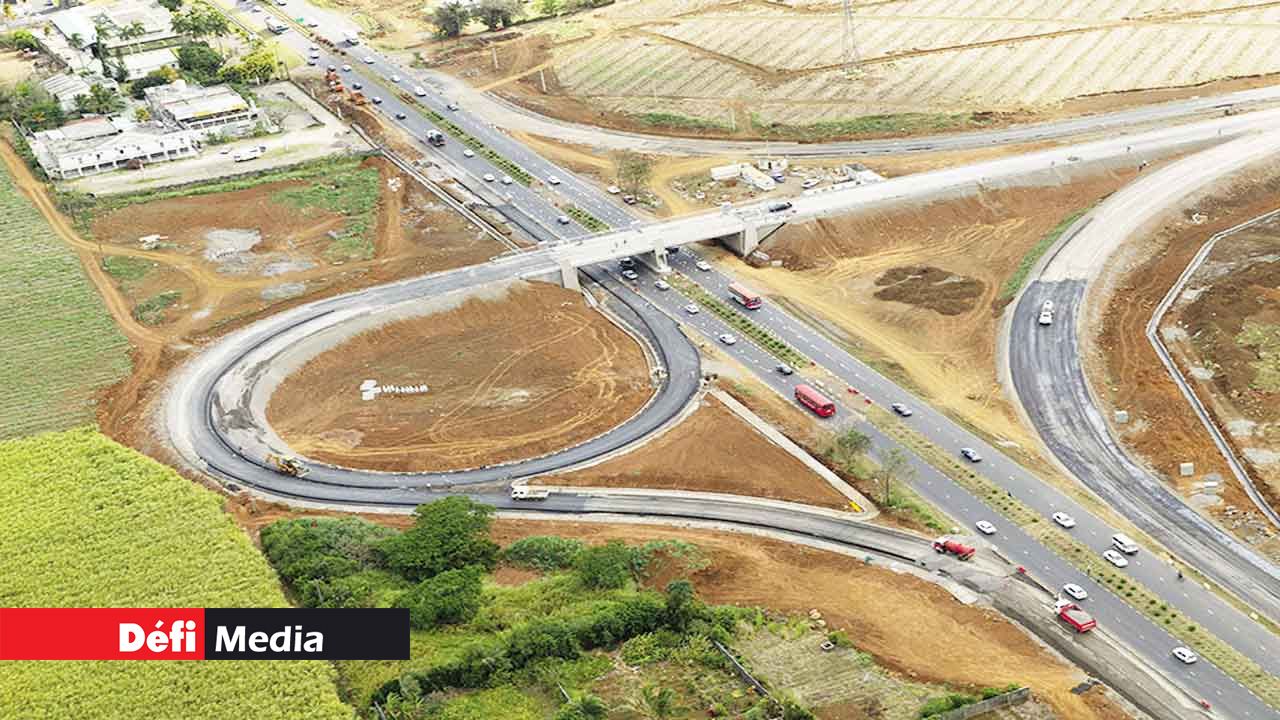
A recent report of the Bank of Mauritius indicate that the private sector of Mauritius is indebted to the tune of Rs 342 billion as at end of February 2017: Rs 190 billion in loans, Rs 103 billion in foreign currency and 37 billion in bank overdrafts. Consumer debts have reached the level of Rs 29 billion, excluding housing loan. At the national level, government debt has crossed the Rs 240 billion mark in December 2016.
The debt situation of the country is not rosy. Be it national debt or private sector debt, the figures are indeed alarming. According to a Bank of Mauritius report on sector-wise distribution of credit to the private sector as at end of February 2017, the total private debt level exceeds Rs 342 billion. The construction sector tops the list of debtors, with debts to the tune of Rs 87 billion. This figure includes Rs 53 billion of housing loans. The global business sector comes next, with debts to the tune of Rs 57 billion. Third on the list, the tourism sector is indebted to the tune of Rs 41 billion. Other sectors with high debts include the trading sector (Rs 30 billion, with Rs 10 billion owed by wholesalers), and the manufacturing and agricultural sectors, each owing Rs 21 billion. The sector-wise debt has been classified into loans, overdrafts and foreign currency loans.
Manufacturing
In the manufacturing sector with a total debt of Rs 21 billion, export-oriented enterprises are indebted to the tune of Rs 5.4 billion. The food and beverages sector owes nearly Rs 5 billion.
Real Estate
The real estate sector remains one of the highest indebted sectors of Mauritius. The figures indicate that loans of Rs 77 billion have been granted to the construction sector while the overdraft level is at nearly 6 billion. A breakdown of the figures reveals that commercial property developers owe about Rs 12 billion, while residential developers have debts amounting to Rs 8 billion. Housing loans have reached nearly Rs 53 billion. It should be noted that developers have taken loans of nearly Rs 2.8 billion in foreign currency.
Financial services
The total debts in the financial services sector amount to about Rs 32 billion, including Rs 5 billion in foreign currencies. Investment companies are the most indebted, accounting for Rs 13 billion while insurance companies have lower debts of Rs 654 million.
Observations
The figures in the report show that banks have loaned as much as Rs 190 billion, with Rs 77 billion to the construction sector mainly. The figures also indicate a low indebtedness of productive sectors like agriculture, manufacturing or ICT. On the other hand, householders have personal debts of about Rs 26.5 billion, which include Rs 2.3 billion for credit cards. Householders have also taken housing loans to the tune of Rs 57 billion.
Public debt
As at 31 December 2016, public debt was estimated to be about Rs 240 billion, which represents nearly 55.3% of Gross Domestic product (GDP). The debt level has increased further during the first three months of this year. During the present financial year, the Ministry of Finance intends to repay debts to the dune of Rs 4.3 billion. As the country embarks on a vast investment program with major projects in the pipeline, the debt situation is likely to worsen. The government has a legal responsibility to bring down the national debt level to 50% of GDP by the year 2018. It is in that context that Mauritius also wants to become a high income country.
 Dan Maraye: “Many means to control public debt”
Dan Maraye: “Many means to control public debt”
Dan Maraye, former Governor of the Bank of Mauritius, explains that there are many methods to control public debt. In simple language, for those not familiar with complex economic terms, as an analogy, one may compare a country to a household. In order to reduce his debts, the householder will have to take appropriate measures, such as reducing his consumption expenditure, or work towards increasing his revenue. Similarly, a country which faces a heavy debt must seek to reduce its current expenditure. “By reducing current expenditure, a reserve is created which can be used to partly pay debts. A country can also take measures to boost its GDP, while controlling its expenditure. It is also possible for a country to resort to other loans to pay existing loans, but this is not always recommended, except in extreme cases. Loans should always be taken for capital expenditure and not to fund current expenses. Finally, a country can sell its assets in order to raise funds, for example through privatisation.”
 Gavin Ng: “Debts for productive ends not an issue”
Gavin Ng: “Debts for productive ends not an issue”
Financial Analyst Gavin Ng says that debts are necessarily a bad thing. “If loans are taken for capital investment, then this is not an issue as we will reap future benefits. When loans are taken for consumption expenditure, then there is a problem. As regards public debt, countries in development phase tend to take high loans. However, intensive investment in capital goods, infrastructure, human capital and modern systems require huge financing but in the long term there is positive payback.
 Dr Bhavish Jugurnath: “The Main Challenge for 2017-18 is to reduce public debt”
Dr Bhavish Jugurnath: “The Main Challenge for 2017-18 is to reduce public debt”
Financial consultant Dr Bhavish Jugurnath says Mauritius recorded a government debt equivalent to 61.60 percent of the country’s Gross Domestic Product in 2015. “Government Debt to GDP in Mauritius averaged 55.96 percent from 1998 until 2015. I believe the local public debt rose in 2015-16 due to the injection of public capital in two banks, and the impact of the rupee depreciation on the external debt. Even though the Mauritian economy has remained resilient since the last two years, despite volatility affecting other emerging and frontier markets, Mauritius needs to be careful. Public debt is high by Mauritian standards,” says the consultant. He added that “Going forward, reforms need to be implemented to take the next leap in development. Policy makers could increase revenues by reducing tax exemptions and further broadening the tax base. The key government strategy should be debt management. Higher imports associated with new public investment programs are likely to widen the current account deficit to some 6 – 6.5% of the Gross Domestic Product (GDP). The Bank of Mauritius has been successful so far in mopping up excess domestic liquidity in the banking system but should continue at an appropriate pace in order to enhance the responsiveness of market interest rates to changes in the monetary policy rate. A fiscal space needs to be created to implement the government’s ambitious investment program while reducing public debt in the medium term.”
Moody’s report
Balancing resilient economy and high government debt
Moody’s investor service claims in a recent report that while Mauritius benefits from a diversified, upper-middle income economy, the country faces challenges stemming from its high government debt, and large and complex financial sector. "Mauritius's small and open economy has been resilient in the face of an unfavourable external environment, thanks mainly to foreign flows into the financial sector, as well as its diversified exports," said Lucie Villa, a Moody's Vice President - Senior Analyst and co-author of the report.
Mauritius's two main credit constraints stem from a relatively high government debt ratio of 60% of GDP, and risks posed by its financial sector to the balance of payments position and government balance sheet. Although execution of the 2016/17 budget is on track, it will be challenging to accelerate fiscal consolidation while at the same time increasing public investment. It highlights that the government plans to reduce its fiscal deficit by close to 1 percentage point of GDP in the next two fiscal years from 3.3% currently, although grants worth 3% of GDP from India will provide some support. Although debt will remain broadly stable in 2017-18, the government will miss its statutory debt ceiling - 50% of GDP by December 2018.
Moody's real GDP growth forecasts for 2017 and 2018 are 3.6% and 3.7%, in line with the historical average. As part of the renegotiation of its Double Taxation Avoidance Agreement (DTAA) with India, Mauritius lost an historical tax advantage, but also gained a new one on interest income related to debt, meaning that the island's financial sector will maintain competitive advantages and continue to attract net financial inflows.
Downward pressure on Mauritius's Baa1 rating with a stable outlook would follow any deteriorating trend in debt metrics or increased external vulnerabilities. On the other hand, a significant reduction in these vulnerabilities would exert positive pressure.

Notre service WhatsApp. Vous êtes témoins d`un événement d`actualité ou d`une scène insolite? Envoyez-nous vos photos ou vidéos sur le 5 259 82 00 !





















